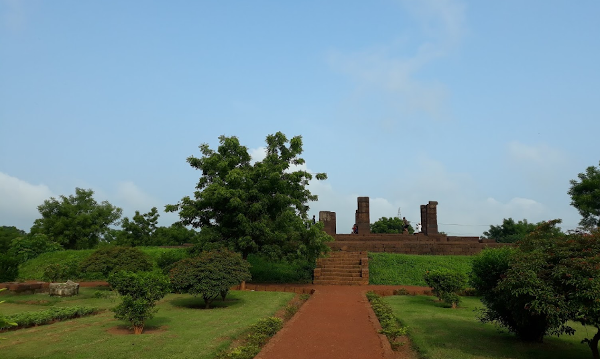Stories, folklore and legends from the epic ‘Mahabharata’ have fascinated Indians for ages. The epic, as we all know, narrates the lives and deeds of two groups of cousins— the Pandavas and Kouravas in ‘Dwapara Yuga’. The two groups fought an epic battle at Kurukshetra to establish their supremacy.
Most have the notion that the events and characters described in the Mahabharata were basically confined to places in northern and western India. But, we are not aware about the fact that the Choudwar-Tangi area of modern-day Odisha had a special link with the Pandavas and their maternal cousin Lord Krishna.
Legend has it that Choudwar was the capital city of King Virata who ruled over the ‘Matshya Desha’ in ‘Dwapara Yuga’. He had constructed a grand palace at the centre of his capital. Besides, he was instrumental in building eight temples dedicated to Lord Shiva in the capital city. The shrines were popularly known as Chateswar, Bateswar, Kedareswar, Uttareswar, Maninageswar, Balunkeswar, Kapaleswar and Jhoteswar temples.
“King Virata’s capital was spread over 60,000 acres. It is believed that he was a staunch devotee of Lord Shiva. He used to ride on a horse and visit all the eight Shiva temples early morning every day. Legend says Virata’s palace was connected with the temples through tunnels. Even, today one can find tunnels on the premises of these temples,” said Braja Mohan Das, a local.
Locals believe that King Virata had dug two large ponds near his palace. It is believed that Pandavas spent the last year of their exile at Choudwar. They and Draupadi were in disguise to hide themselves from the spies of Duryodhana. It has often been mentioned that Choudwar is the place where Bhima, the second of the Pandava brothers, killed King Virata’s brother-in-law Kichaka, who had tried to outrage Draupadi’s modesty.
“Locals believe that the wedding ceremony of Arjuna’s son Abhimanyu and King Virata’s daughter Uttara was organised at Choudwar. Lord Krishna and his elder brother Lord Balaram and many other kings and royals were present at the wedding ceremony,” said Tophani Baba, a resident of this area. Many villagers also believe that Arjuna had dug up a well with his arrow at Choudwar and ended the drinking water crisis.
Locals claimed that some stone structures were visible from a few mounds at Choudwar some years ago. According to them, people used to find small pieces of gold near the mounds during monsoons. “Our ancestors told us that people used to find gold pieces near the mounds in the rainy season. Legend says King Virata had organsied a massive ‘Yajna’ at his palace to express his gratitude to Lord Shiva,” said local youth Rabi Narayan Dash.
Some years ago, the Archaeological Survey of India (ASI) had undertaken an excavation at Choudwar and found some stone-made structures under the mounds. Locals are of the opinion that the structures are nothing but the remnants of King Virata’s palace. “We believe that the stone structures found during the excavation were part of King Virata’s palace. People say that there are still some constructions underground at the site. Even today one can find eight Shiva temples in our locality. Some of these temples have been renovated by some kings in the medieval period while a few are in a state of dilapidation,” said Bijaya Kumar Sahu, a villager of Choudwar.
Local councillor Subhendu Samal claimed that the ASI stopped excavation in the midway. “They had unearthed certain structures and put up fences around them. But, they are yet to make any further research on the place,” informed Samal.
Source: Orissa Post
Image Courtesy: Odisha Tourism
You may also like
-
India Can’t Afford to Remain Stagnant at this Juncture, Says PM Modi; Asks People to Buy Locally-Made Goods
-
Stolen Artefacts to be Returned to India from Scotland Museums
-
Netaji’s Hologram Statue at India Gate
-
10th Century Stone Idol of Goat Head Yogini IllegallyRemoved from A Temple in Lokhari, Banda, UP Being Returned to India
-
UNESCO Inscribes ‘Durga Puja in Kolkata’ on the Representative List of Intangible Cultural Heritage of Humanity
